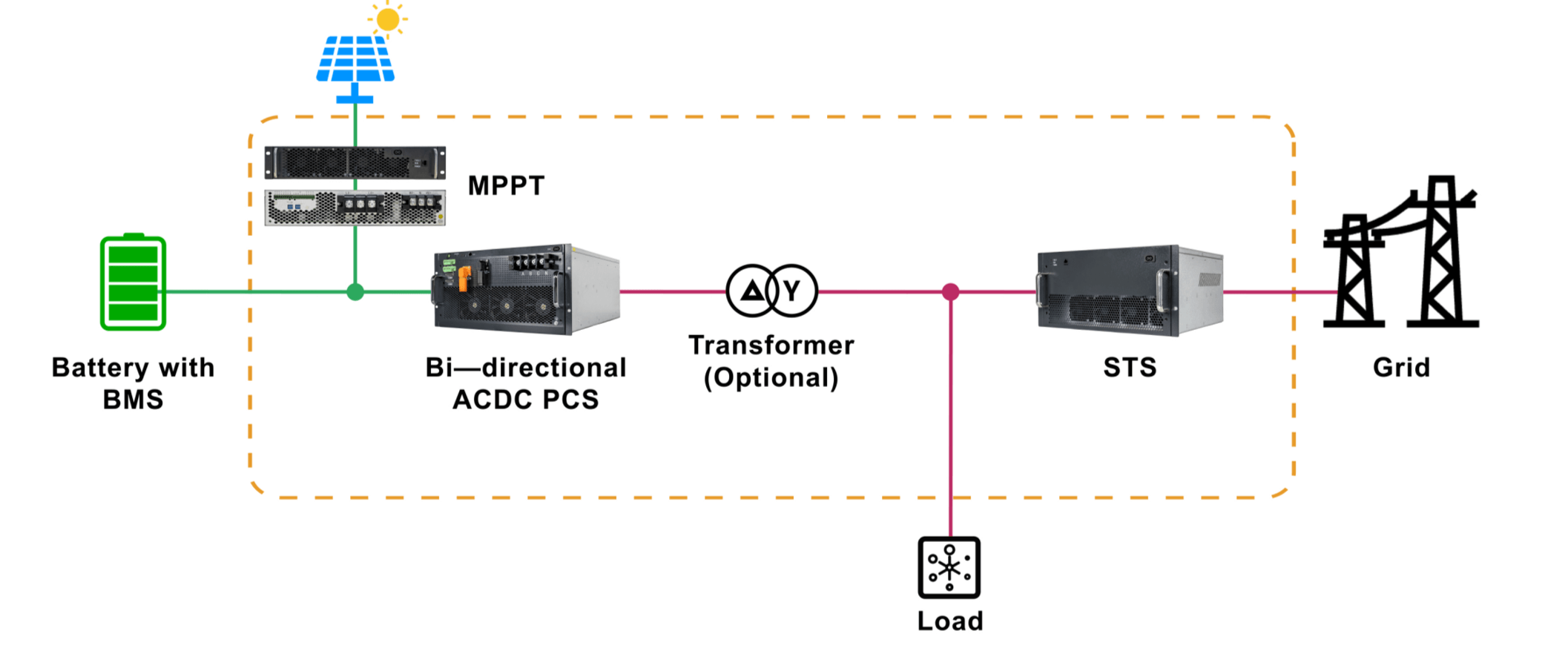In the dynamic landscape of commercial and industrial energy storage, the integration of hybrid energy storage systems (Hybrid ESS) with photovoltaics (PV) is gaining prominence. Whether you’re designing a grid-connected system, backup power solution, or peak shaving application, understanding the nuances of coupling approaches—direct current (DC) and alternating current (AC)—can significantly impact system performance. Let’s delve into the definitions, distinctions, and recommended applications for each.
In the dynamic landscape of commercial and industrial energy storage, the integration of hybrid energy storage systems (HESS) with photovoltaics (PV) is gaining prominence. Whether you’re designing a grid-connected system, backup power solution, or peak shaving application, understanding the nuances of coupling approaches—direct current (DC) and alternating current (AC)—can significantly impact system performance. Let’s delve into the definitions, distinctions, and recommended applications for each.
Table of Contents
1. Direct Current (DC) Coupling Definition:
- DC Coupling: In an HESS, both the PV array and the energy storage system share the same DC bus.
- Advantages:
- Efficiency: Minimizes energy conversion losses.
- Simplicity: Fewer components and conversions.
- Battery Charging: Allows direct charging of batteries from PV panels.

2. Alternating Current (AC) Coupling Definition:
- AC Coupling: In an HESS, the PV array and the energy storage system connect separately to the AC grid.
- Advantages:
- Flexibility: Works with existing PV systems.
- Independent Operation: PV and storage can operate independently.
- Grid Interaction: Supports grid services such as frequency regulation and demand response.
3. Key Distinctions DC vs. AC Coupling:
- DC Coupling:
- Unified Bus: Both PV and storage share the same DC bus.
- Efficiency: Minimizes energy conversion losses.
- Challenges: Requires specialized inverters for both PV and storage.
- AC Coupling:
- Separate Paths: PV and storage connect to the AC grid independently.
- Flexibility: Works with existing PV systems.
- Challenges: Slightly lower efficiency due to double conversion.
4. Recommended Applications
DC Coupling:
- New Installations: Ideal for new PV + storage systems.
- High-Efficiency Demands: When minimizing energy losses is critical.
- Off-Grid Applications: For remote sites with no existing grid connection.
AC Coupling:
- Retrofitting: Suitable for adding storage to existing PV systems.
- Grid-Tied Systems: When grid interaction and flexibility are essential.
- Demand Response: Participating in grid services.
5. Conclusion
Choosing between DC and AC coupling depends on your specific project requirements. By evaluating efficiency, flexibility, and system goals, you can seamlessly integrate hybrid energy storage systems with photovoltaics and contribute to a sustainable energy future.
Related Reading
Designing High-Reliability, Low-Cost 500 kW/1000 kWh Energy Storage Systems
Enhancing Commercial Energy Storage Systems with Direct PCS-BMS Communication
Understanding Load Characteristics and Design Considerations for Commercial Energy Storage Systems
6 Essential Strategies for Choosing C&I BESS Energy Storage Battery Solutions
10 Essential Steps to Optimize Your C&I Energy Storage System ESS with the Right PCS
Decoding 3P3W vs. 3P4W for Commercial and Industrial Energy Storage PCS
3 different topologies of energy storage systems ESS and their development history
